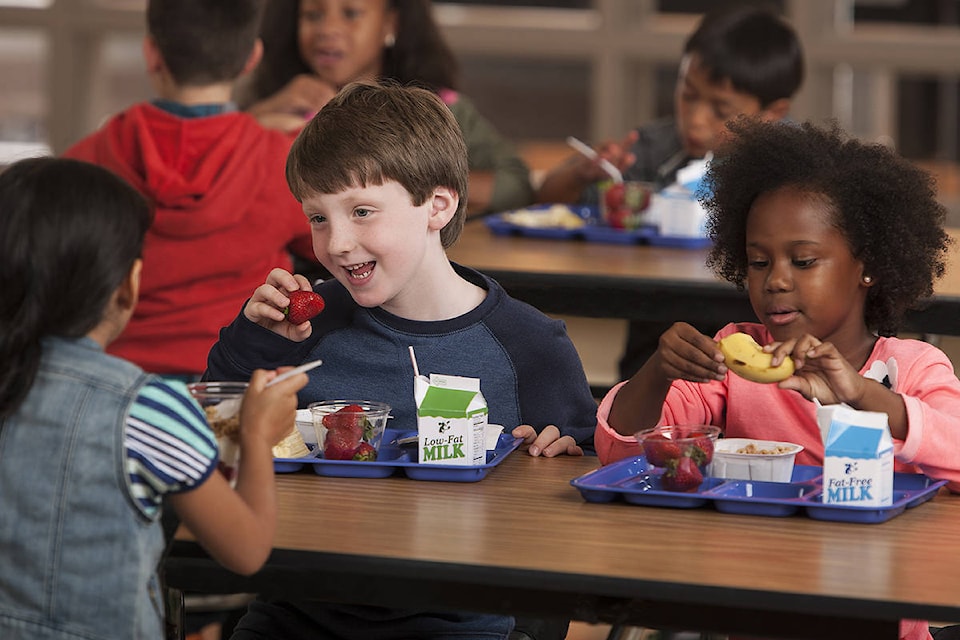The Campbell River School District has been researching how lunch breaks work in district elementary schools after an online petition was started asking them to give kids more time to eat.
The petition cites a 2016 study in the Journal of the Academy of Nutrition and Dietetics that says students with fewer than 20 minutes to eat consume 13 per cent fewer vegetables, 23 per cent fewer fruits and 10 per cent less milk compared to those given more than 25 minutes to eat.
Last week, Superintendent Tom Longridge told the board of education that since staff heard some parents were upset with district elementary students only receiving 15 minutes of supervised eating time at lunch, they decided to investigate.
Longridge says they looked at each elementary school to determine how long the students had for supervised time to eat at lunch, whether that time came before or after “play time” and whether students can continue to eat after the allotted time if needed.
“We have eight schools that give 15 minutes and three schools that give 20 minutes of supervised eating time and one school where it depends on the grade level and is anywhere from 15 to 30 minutes,” Longridge says.
“At all schools,” Longridge continues, “kids are given extra time to eat if it’s required. It’s still supervised and no one is told, no, they can’t eat after the allotted time.”
He says the district also spends a “considerable amount of money” each year on in-school food programs to make sure kids get their nutritional needs looked after, such as for breakfast programs, “and to have food available at lunch for those students either forget or don’t have a lunch, and we participate in the fruit and vegetable program and the kids can eat those throughout the day. We don’t limit that.”
Longridge insists that although they don’t think there needs to be a district-wide change at this point, they are going to continue to examine it. What’s most important is for parents to engage the schools directly if they have concerns about the matter.
“We can’t control what kids have in their lunch boxes or if they eat it all, but we definitely encourage any parent who has a concern that their kid is coming home with a full lunch box, to have that conversation with their teacher or administrator around what’s happening and work with the school.”
Trustee Joyce McMann says that in circumstances where there’s a problem with how much children are eating, it’s likely because kids are rushing off to play before they finish eating, not that they aren’t given enough time to finish or don’t have enough access to food.
“I think it’s more about creating somewhat of an ambiance where children will actually eat the food that is good for them and feel that sense of relaxation around eating rather than eating being something you have to get through before you get to go play,” she says.
“I think that’s certainly the crux of the issue in regard to timing,” Longridge agrees, saying it’s another facet they will continue to examine, especially now they know which school shave the kids eat before they play and which ones do the opposite.
